Recent Posts
Understanding Flash Floods
1/17/2024 (Permalink)
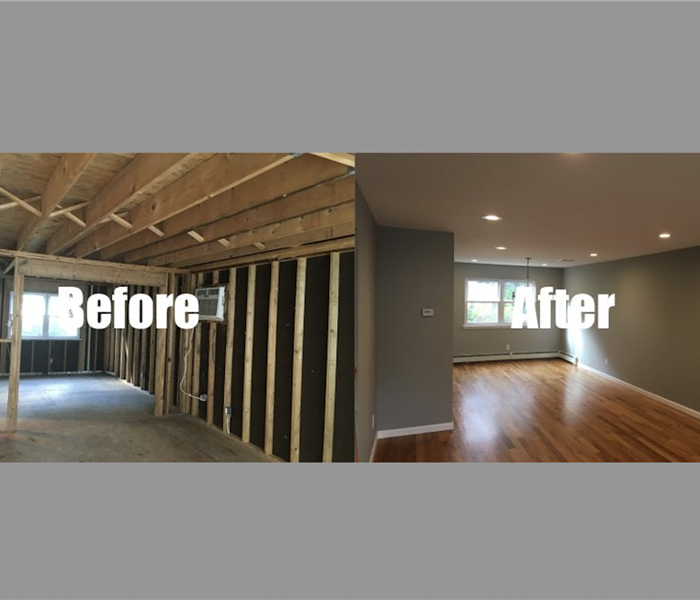 Flash floods are great examples of Mother Nature's fury.
Flash floods are great examples of Mother Nature's fury.
Flash floods are great examples of Mother Nature's fury, capable of causing significant damage within minutes. As experts specializing in water damage cleanup and restoration, we want to equip you with essential knowledge about flash floods and vital preparation measures in this article.
Understanding Flash Floods
Flash floods are abrupt, rapid floods that occur within six hours of heavy rainfall or other causative factors like dam breakage, landslide, or sudden drainage of water bodies in a typically dry area. They can roll boulders, uproot trees, destroy buildings, and carry away cars, swiftly altering the landscape.
Flash Flood Risk Factors
Topography, soil conditions, rainfall intensity, and duration are key risk factors. Urban areas are especially susceptible due to concrete surfaces and complex drainage systems.
Safety Tips for Flash Floods
Being adequately prepared and informed reduces risk during a flash flood dramatically. Here are some safety pointers:
- Stay Informed
Keep an eye on weather updates and flood alerts from local authorities.
- Know Your Area
Familiarize yourself with your local topography and flood zones. This knowledge will let you understand how quickly and severely you could be affected.
- Prepare an Emergency Kit
This kit should have essentials like water, food, medication, a flashlight, a battery-powered radio, and important documents.
- Avoid Floodwaters
Don't attempt to walk or drive through floodwaters. It's hard to estimate the depth or the current's power.
- Evacuation Planning
Plan evacuation routes that lead to higher ground. If authorities advise evacuation, do so immediately.
Flash Flood Cleanup and Restoration – Trust the SERVPRO® Experts
When a flash flood hits, the resultant water damage can be overwhelming. Acting swiftly is critical to minimize loss and ensure quicker restoration. That's where we come in.
Our team of experts at SERVPRO of Lake Conroe is ready to act fast with advanced equipment and techniques. We will expedite the water removal process, dry and clean the areas, restore items, and perform necessary repairs to bring your property back to its pre-flood condition.
Remember, understanding flash floods and the measures needed to safeguard against them can protect your property and save lives. Stay informed, stay prepared, and when the storm subsides, our SERVPRO® team is here to make it "Like it never even happened."
Clearing the Air: The Role of Deodorization in Fire Damage Restoration
12/15/2023 (Permalink)
After a fire, the visible damage is evident, but the lingering odors can be equally distressing. Let's explore why deodorization is an essential step in the restoration process and how it can make a significant difference in your home's recovery.
Understanding the Impact of Smoke Odor
When a fire occurs, it leaves behind not only charred remnants but also a pervasive, stubborn smoke odor. This odor can penetrate porous surfaces, materials, and even HVAC systems, making it challenging to remove. Smoke odors are not only unpleasant but can also pose health risks, making their elimination paramount.
The Importance of Prompt Deodorization
Lingering smoke odors may contain harmful particles and chemicals that can adversely affect your health. Proper deodorization reduces these risks, creating a healthier living environment.
Smoke odors can also decrease the resale value of your home and make it less appealing to potential buyers. Deodorization is a smart investment that helps maintain or even increase your property's value.
The Deodorization Process
- Assessment: Our trained professionals start by assessing the extent of smoke odor damage. This step is crucial to determine the appropriate deodorization methods.
- Cleaning: Thorough cleaning is essential to remove soot and other residues that may be contributing to the odor problem.
- Ozone Treatment: Ozone generators can neutralize odor molecules, effectively eliminating the smell. These generators should be used by trained professionals to ensure safety and effectiveness.
- Thermal Fogging: This process involves using a heated fog to penetrate and neutralize odors in hard-to-reach areas.
- Sealants: In some cases, sealing surfaces can prevent odors from re-emerging, providing long-term protection.
- HVAC Cleaning: Smoke odors can infiltrate your HVAC system, so it's essential to clean and deodorize the ductwork.
Deodorization is a critical aspect of fire damage restoration, one that should not be overlooked. Its impact on your health and property value cannot be overstated. When facing the aftermath of a fire, professional deodorization can make your home safe, comfortable, and inviting once more.
SERVPRO® of Lake Conroe is here to assist you throughout the fire damage restoration process, including comprehensive deodorization. If you're in need of expert guidance and assistance, don't hesitate to contact our local SERVPRO® professionals. We're here to help you reclaim your home and your peace of mind.
What To Do If You Have Mold in Your Commercial Kitchen
11/9/2023 (Permalink)
Running a successful restaurant involves many challenges, and one that often goes overlooked is mold management in your kitchen. Mold can thrive in humid climates like Lake Conroe, Texas, and addressing it is vital to maintain a clean, safe, and efficient kitchen environment. In this blog, we'll delve into crucial strategies to help you effectively deal with mold issues in your restaurant kitchen.
Understanding the Impact of Mold
Mold can have a significant impact on both the appearance and functionality of your restaurant kitchen. In a high-humidity environment like Lake Conroe, mold can grow on various surfaces, including walls, ceilings, and even food storage areas. It's not only unsightly but also poses a risk to food safety and customer satisfaction. To tackle mold effectively, consider the following strategies:
1. Regular Inspections
One of the first steps in mold management is implementing a consistent inspection routine. Regularly check for signs of moisture issues, such as water leaks, condensation, or dampness, especially around sinks, dishwashers, and refrigerators. Early detection is key to addressing mold problems promptly.
2. Proper Ventilation
Ensure your kitchen is adequately ventilated to minimize moisture buildup. Effective ventilation can be achieved through the use of exhaust fans and opening windows when necessary to promote airflow. Additionally, ensure that your ventilation systems, including ducts and vents, are cleaned and well-maintained to prevent mold growth within them.
3. Regular Cleaning and Maintenance
Develop a comprehensive cleaning schedule for your kitchen, with a focus on high-humidity areas like dishwashing stations and sinks. Mold can flourish in neglected corners and hidden spaces, so pay close attention to all surfaces. Consider using mold-resistant materials when renovating or updating your kitchen, especially in areas prone to moisture.
4. Promptly Address Water Leaks
Water leaks and plumbing issues are common culprits behind mold growth. Swiftly address any leaks to prevent mold from taking hold. Regularly inspect your restaurant's roof, windows, and doors for potential entry points for water intrusion and address them promptly to maintain a mold-free environment.
5. Control Humidity
Invest in dehumidifiers for areas prone to high humidity, such as walk-in coolers, to maintain humidity levels below 50%. Your HVAC system should also be well-maintained and equipped to control indoor humidity effectively, helping to create an environment less conducive to mold growth.
6. Educate Your Staff
Your kitchen staff plays a vital role in mold prevention. Train them to recognize signs of mold or moisture issues and encourage them to report any concerns promptly. Implement strict cleanliness and hygiene protocols to prevent mold-contaminated food from reaching your customers.
Maintaining a mold-free restaurant kitchen in Lake Conroe is essential for the success and reputation of your restaurant. By diligently implementing these mold prevention measures and maintaining a clean, dry environment, you can uphold the highest standards of food safety and customer satisfaction. Remember that prevention is the key to success in managing mold in your restaurant kitchen. Should you ever encounter mold problems that are beyond your control, our local SERVPRO® of Lake Conroe team is here to assist you with professional mold remediation services. Stay proactive and continue serving your customers with confidence!
Why Disinfection After Water Damage Is Important
10/18/2023 (Permalink)
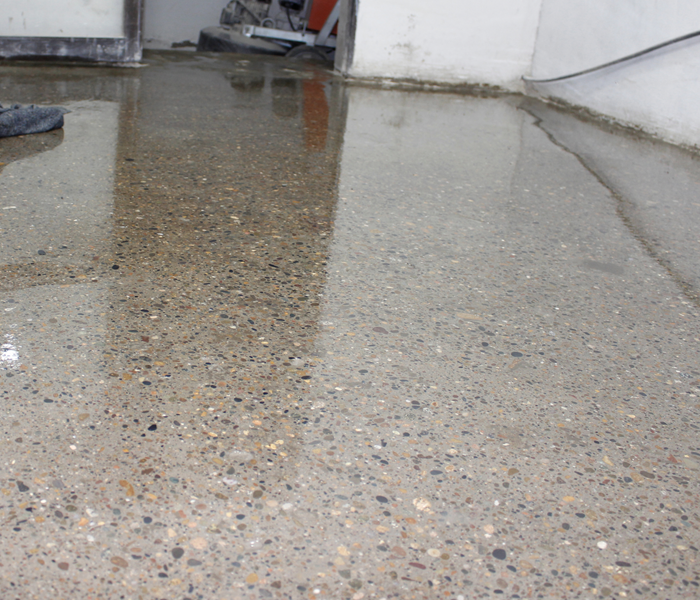 Disinfection after a water loss is crucial to protect your property after water damage.
Disinfection after a water loss is crucial to protect your property after water damage.
Water damage is a distressing experience for any homeowner in the Lake Conroe area, where heavy rains and flooding are common occurrences. Apart from the visible damage to your property, water damage can also introduce other hazards due to the potential growth of harmful microorganisms. In this blog, we will explore the importance of disinfection after water damage and provide you with effective techniques and products to safeguard your home and family.
Understanding the Need for Disinfection
Water damage can create the perfect breeding ground for bacteria, viruses, and mold. Even after visible water is removed, residual moisture can lead to microbial growth, posing risks to your property. Disinfection is a crucial step to ensure your home is safe and healthy after water damage.
Effective Disinfection Techniques
Cleaning and Removal of Debris:
Before disinfection, ensure that all debris, mud, and contaminated materials are removed from your property. This step is essential to allow disinfectants to work effectively.
Use of EPA-Registered Disinfectants:
When choosing disinfectants, opt for those registered with the Environmental Protection Agency (EPA). These products have been tested and approved for their effectiveness against a wide range of pathogens.
Manual Cleaning and Disinfecting:
For non-porous surfaces like countertops and appliances, manually clean and disinfect with appropriate products. Follow manufacturer instructions for dilution and contact time.
Fogging and Spraying:
In cases of extensive water damage, consider professional fogging or spraying services. These methods can effectively disinfect large areas and hard-to-reach places.
HVAC System Cleaning:
Don't forget to clean and disinfect your HVAC system, as it can circulate contaminants throughout your home. Professional HVAC cleaning can be essential for maintaining indoor air quality.
Recommended Disinfection Products
Chlorine-based Disinfectants: Effective against a broad spectrum of pathogens, chlorine-based disinfectants are commonly used for water damage restoration.
Hydrogen Peroxide-based Disinfectants: These are less toxic and can be an excellent choice for disinfecting surfaces without leaving harmful residues.
Professional Disinfection Services: Consider hiring professional water damage restoration companies like SERVPRO® for thorough disinfection using advanced equipment and techniques.
Safety Precautions
Always wear appropriate PPE, including gloves and masks, when handling disinfectants. Ensure proper ventilation during and after disinfection to minimize exposure to fumes.
Disinfection after water damage is a critical step to protect your property and the people inside it. Using effective techniques and EPA-registered disinfectants can make a significant difference in preventing microbial growth. While DIY cleaning and disinfection are possible for small-scale damage, for extensive water damage, it's best to rely on professional services like SERVPRO® to ensure thorough and safe disinfection.
For expert assistance with water damage restoration and comprehensive disinfection in the Lake Conroe area, contact SERVPRO® today. We're here to help you restore your home and peace of mind.
Protecting Your Business in Southern Texas Against Storm-Related Disruptions
9/26/2023 (Permalink)
Running a business in Southern Texas brings numerous opportunities, but it also comes with the responsibility of preparing for the region's unpredictable weather patterns. From hurricanes to heavy rainfall, storm-related disruptions can have a significant impact on your business operations. In this blog, we'll explore practical strategies to safeguard your business from storm-related disruptions, ensuring continuity and minimizing potential losses.
Understanding Southern Texas' Storm Challenges for Businesses
Southern Texas is susceptible to various storm-related challenges, including tropical storms, hurricanes, heavy rains, and flooding. These weather events can lead to power outages, property damage, supply chain interruptions, and more. Businesses need to be prepared to navigate these challenges and maintain operations even in the face of adverse weather.
Develop a Comprehensive Emergency Plan
Creating an emergency plan tailored to your business is essential. This plan should include protocols for evacuation, employee safety, communication, and business continuity. Assign roles and responsibilities to key employees to ensure a swift and coordinated response during storm-related disruptions.
Establish Remote Work Capabilities
Incorporate remote work capabilities into your business operations. Cloud-based systems and remote communication tools allow employees to work from home during storms or other disruptions. This flexibility can help your business continue functioning even if physical access to the office is limited.
Protect Data and Documents
Back up crucial business data and documents to secure cloud storage. In the event of property damage or power outages, this practice ensures that your business-critical information remains accessible. Consider having physical copies stored in a safe location as well.
Fortify Your Physical Location
If your business has a physical storefront or office, take steps to storm-proof the property. Install storm shutters or reinforce windows and doors to protect against wind and debris. Additionally, elevate electrical equipment and important machinery to prevent flood damage.
Maintain Communication Channels
Open and reliable communication is paramount during storm-related disruptions. Ensure you have multiple communication channels in place to reach employees, customers, and suppliers. Use social media, email, text messages, and other platforms to keep stakeholders informed.
Build Relationships with Suppliers
Establish strong relationships with your suppliers and vendors. Discuss contingency plans for supply chain disruptions caused by storms or other emergencies. Having alternative suppliers or backup plans in place can prevent delays in your business operations.
Invest in Business Interruption Insurance
Consider obtaining business interruption insurance that covers losses incurred due to storm-related disruptions. This insurance can provide financial support to help you recover lost income, cover ongoing expenses, and facilitate the resumption of normal business operations.
Protecting your business from storm-related disruptions in Southern Texas requires strategic planning and proactive measures. Developing an emergency plan, enabling remote work, safeguarding data, fortifying your physical location, maintaining communication channels, nurturing supplier relationships, and investing in business interruption insurance are all crucial steps. By implementing these strategies, your business can better weather the storms, ensuring continuity, and minimizing potential losses.
Fire Safety in the Workplace: A Comprehensive Guide to Preparing Your Business for Potential Fires
8/16/2023 (Permalink)
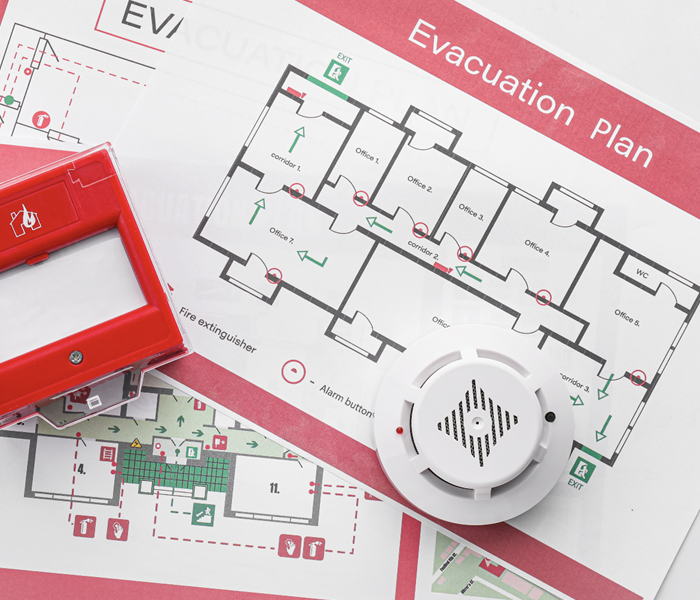 Have a evacuation plan in place to reduce the risk of injury in your business.
Have a evacuation plan in place to reduce the risk of injury in your business.
Fires are unpredictable and can have devastating consequences for businesses. From property damage to financial losses and potential harm to employees and customers, the impact of a fire can be far-reaching. That's why it's crucial for business owners to take proactive measures to prepare for a fire and minimize the risks associated with such an event. In this blog post, we will provide you with a step-by-step guide on how to prepare your business for a fire, ensuring the safety of everyone involved and the continuity of your operations.
Conduct a Fire Risk Assessment
Start by assessing the fire risks specific to your business and premises. Identify potential ignition sources, flammable materials, and areas of concern. Evaluate your emergency evacuation routes, fire alarms, fire extinguishers, and any other fire safety equipment. A comprehensive fire risk assessment will serve as the foundation for your fire preparedness plan.
Develop a Fire Safety Plan
Based on the findings of your fire risk assessment, create a detailed fire safety plan for your business. Include information on emergency procedures, evacuation routes, assembly points, and designated roles and responsibilities for employees during a fire. Ensure the plan is easily accessible to all employees and conduct regular training sessions to familiarize them with the procedures.
Install and Maintain Fire Safety Equipment
Ensure that your business is equipped with appropriate fire safety equipment, including smoke detectors, fire extinguishers, fire sprinklers, and fire blankets. Regularly inspect and maintain this equipment to ensure it is fully operational. Consider partnering with a professional fire safety company to conduct inspections and perform necessary maintenance.
Implement Fire Prevention Measures
Put preventive measures in place to reduce the risk of fire in your business. This can include proper storage and handling of flammable materials, regular equipment maintenance and inspection, and implementing smoking policies in designated areas. Educate your employees about fire prevention measures and encourage them to report any potential fire hazards.
Develop an Emergency Communication Plan
Communication is crucial during a fire emergency. Establish a clear and efficient communication plan that includes methods of notifying employees, emergency services, and relevant stakeholders. Designate individuals responsible for initiating emergency communications and ensure they are trained on the protocols.
Conduct Regular Fire Drills
Regularly practice fire drills with your employees to ensure they are familiar with evacuation routes and procedures. These drills will help identify any gaps or areas for improvement in your fire safety plan. After each drill, conduct a debriefing session to discuss any issues and make necessary adjustments to your plan.
Review and Update Your Fire Preparedness Plan
Your fire preparedness plan should be a living document that is regularly reviewed and updated. As your business evolves or as regulations change, ensure that your plan reflects these updates. Keep abreast of the latest fire safety practices and protocols to ensure that your business remains prepared for any fire-related event.
By following these steps and prioritizing fire preparedness, you can significantly reduce the risks associated with a fire and increase the safety of your business and everyone within it. A well-prepared business will not only protect lives and property but will also be better equipped to recover and resume operations in the event of a fire. Remember, fire preparedness is an ongoing effort that requires regular attention and updates to ensure its effectiveness.
Defending Against Water Damage: Effective Strategies for Preventing Water Loss
7/20/2023 (Permalink)
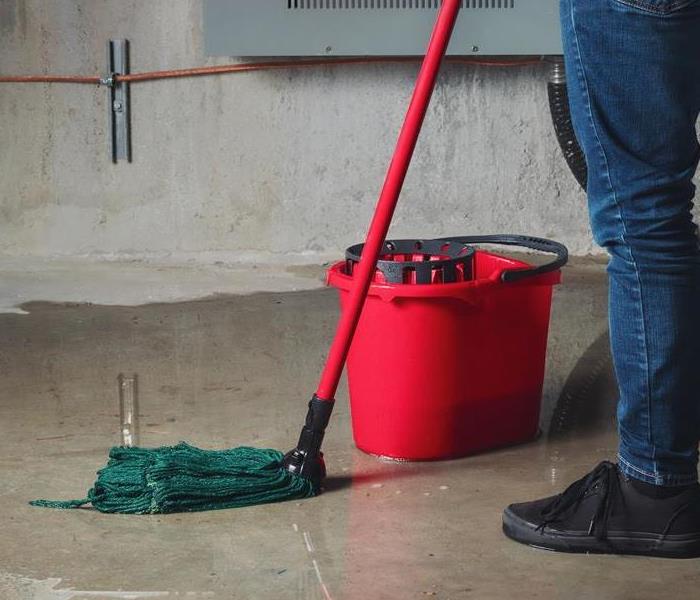 Preventing a water loss can be hard. Be prepared is key to ensuring your home and property is safe.
Preventing a water loss can be hard. Be prepared is key to ensuring your home and property is safe.
Water damage can be a costly and disruptive ordeal for any property owner. Whether it's caused by a burst pipe, leaky roof, or a faulty appliance, water loss can lead to structural damage, mold growth, and the loss of valuable belongings. The good news is that with proactive measures and regular maintenance, you can significantly reduce the risk of water damage and protect your property. In this blog, we will explore effective strategies and practical tips for preventing water loss and preserving the integrity of your home or business.
Inspect and Maintain Plumbing Systems
Regularly inspect your plumbing system for signs of leaks, corrosion, or damage. Check for drips, puddles, or unusual sounds that may indicate an issue. Replace worn-out washers, faulty seals, or damaged pipes promptly. Consider scheduling professional plumbing inspections to identify hidden leaks or potential problems before they escalate.
Maintain Roof and Gutters
A well-maintained roof is crucial in preventing water intrusion. Inspect your roof for missing shingles, cracks, or damaged flashing. Clean your gutters and downspouts regularly to ensure proper water drainage. Clogged gutters can lead to overflowing water, which may seep into the walls or foundation. Trim overhanging tree branches near the roof to prevent damage from falling limbs during storms.
Install and Monitor Water Leak Detection Devices
Invest in water leak detection devices, such as sensors, alarms, or smart leak detectors. These devices can quickly detect leaks, abnormal moisture levels, or changes in water flow and alert you in real-time. Place them near appliances, water heaters, under sinks, and in basements or crawl spaces to catch leaks early and prevent extensive damage.
Be Mindful of Appliance Maintenance
Regularly inspect and maintain household appliances that use water, such as washing machines, dishwashers, and refrigerators with water dispensers. Check hoses and connections for signs of wear or leaks and replace them if necessary. Follow manufacturer guidelines for cleaning and maintenance to ensure optimal performance and prevent water-related mishaps.
Properly Seal Windows and Doors
Ensure that windows and doors are properly sealed to prevent water infiltration during heavy rain or storms. Inspect and replace damaged weatherstripping and caulk gaps or cracks around frames. Proper sealing not only prevents water from entering but also enhances energy efficiency by reducing drafts.
Install Sump Pump and Backup Systems
For properties prone to basement flooding or excess groundwater, consider installing a sump pump. A sump pump automatically removes water from the basement, preventing flooding and water damage. Additionally, installing a backup sump pump or a battery-powered backup system ensures continued operation during power outages.
Know Your Water Main Shut-off Valve
Familiarize yourself with the location of your water main shut-off valve. In case of a sudden water leak or pipe burst, shutting off the main water supply promptly can minimize damage. Regularly test the valve to ensure it is in proper working condition.
Preventing water loss requires a proactive approach and regular maintenance of your property's systems and infrastructure. By inspecting and maintaining plumbing systems, monitoring appliances, and addressing potential issues promptly, you can significantly reduce the risk of water damage. Additionally, taking measures to maintain your roof, gutters, and sealing openings will fortify your property's defense against water intrusion. Remember, vigilance and preparedness are key in protecting your home or business from the costly and disruptive effects of water loss.
Why You Need a Hygienist to Detect Mold in Your Home or Workplace
5/10/2023 (Permalink)
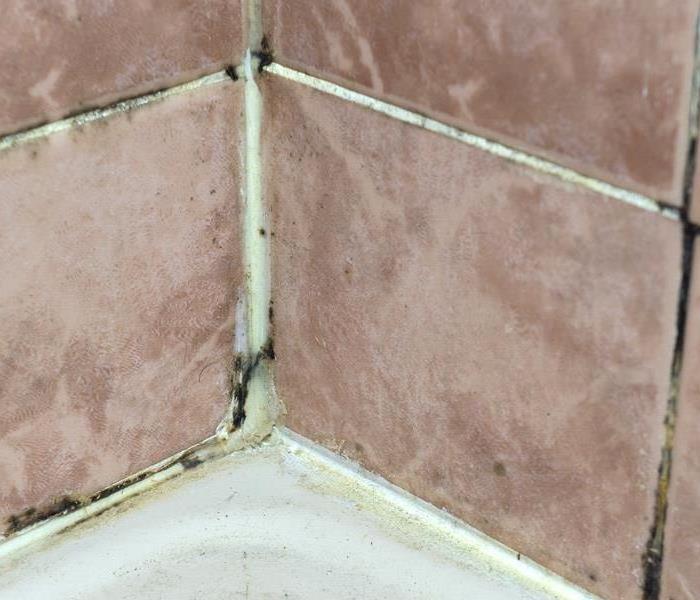 A hygienist is necessary for mold detection.
A hygienist is necessary for mold detection.
Mold growth in your home or workplace can cause problems if left unchecked. Mold spores can cause issues, so it's important to identify and remove mold as soon as possible. While some mold growth may be visible, other hidden mold can go undetected. This is why you may need a hygienist to check for mold. In this blog, we'll explore the reasons why a hygienist is necessary for mold detection.
What is a hygienist?
A hygienist is a professional who specializes in environmental health and safety. In the context of mold detection, a hygienist is trained to identify mold growth, assess the extent of the problem, and determine the best course of action to remediate the issue. They have the knowledge and expertise to evaluate indoor air quality, moisture levels, and ventilation systems.
Proper Identification
Not all mold is visible, and it can grow in hard-to-reach places. A hygienist has the necessary tools and expertise to detect mold growth that may be hidden from view. They use specialized equipment such as thermal imaging cameras, moisture meters, and air samplers to identify mold growth accurately.
Objective Assessment
A hygienist can provide an objective assessment of the extent of the mold problem. They can identify the type of mold present and determine the potential risks associated with it. This information can help you understand the severity of the problem and make informed decisions about the remediation process.
Remediation Plan
A hygienist can provide a detailed remediation plan that outlines the steps required to remove the mold safely and effectively. This plan will include the type of cleaning and disinfection required, the necessary protective gear for the workers, and the disposal of contaminated materials.
Clearance Testing
After the mold remediation process is complete, a hygienist can conduct clearance testing to ensure that the mold has been properly removed. Clearance testing involves air and surface sampling to confirm that mold spores are no longer present.
In conclusion, mold growth can cause serious issues if not addressed properly, and it's important to identify and remove it as soon as possible. A hygienist is necessary for mold detection because they have the expertise and tools to accurately identify mold growth, provide an objective assessment of the problem, develop a remediation plan, and conduct clearance testing. If you suspect mold growth in your home or workplace, it's essential to hire a certified hygienist to ensure that the mold is properly identified and removed.
Lint Be Gone: A Step-by-Step Guide to Cleaning Your Dryer Vent and Improving Safety
4/10/2023 (Permalink)
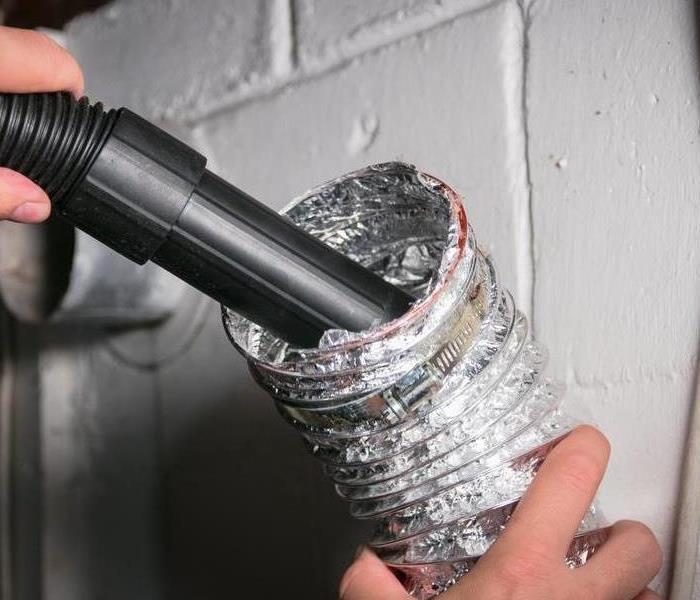 SERVPRO can help clean your dryer vent and prevent potential fires
SERVPRO can help clean your dryer vent and prevent potential fires
As a homeowner, it's important to take care of your appliances to ensure they are functioning properly and safely. One appliance that is often overlooked when it comes to maintenance is the dryer. Specifically, the dryer vent is an important component that should be cleaned regularly to prevent potential hazards. In this blog, we'll discuss when you should clean your dryer vent and the benefits of doing so.
First and foremost, it's important to understand what the dryer vent does. The dryer vent is responsible for removing hot, moist air from the dryer and directing it outside. Over time, lint and other debris can build up in the vent, causing it to become clogged. This can lead to a number of hazards, including fire, carbon monoxide poisoning, and reduced efficiency of the dryer.
When should you clean your dryer vent?
The answer depends on a few factors. As a general rule of thumb, it's recommended to clean your dryer vent at least once a year. However, if you notice any of the following signs, it may be time to clean your dryer vent sooner:
- Your clothes are taking longer to dry than usual.
- You notice a burning smell when the dryer is running.
- The outside of the dryer feels hot to the touch.
- You see an excessive amount of lint accumulating around the outside vent.
If you notice any of these signs, it's best to clean your dryer vent as soon as possible to prevent any potential hazards.
There are a few benefits to cleaning your dryer vent regularly. The first is increased safety. A clogged dryer vent can lead to a fire damage in your home. Regular cleaning can prevent these hazards and keep your home and family safe.
Improved efficiency
Another benefit of cleaning your dryer vent is improved efficiency. When the vent is clogged, the dryer has to work harder to dry your clothes, which can increase your energy bills and reduce the lifespan of your dryer. Cleaning the vent can improve the efficiency of the dryer, saving you money in the long run.
Air Quality
In addition to these benefits, cleaning your dryer vent can also improve the air quality in your home. When the vent is clogged, it can lead to a buildup of mold and other allergens, which can exacerbate allergies and other respiratory problems.
In conclusion, it's important to clean your dryer vent regularly to prevent potential hazards and improve efficiency. As a general rule of thumb, it's recommended to clean your dryer vent at least once a year. However, if you notice any signs of a clogged vent, it's best to clean it as soon as possible. Regular cleaning can increase safety, improve efficiency, and improve air quality in your home. Give SERVPRO a call to help clean your dryer vent and prevent future fires to your property.
How To Care For Your Belongings After Water Damage
3/14/2023 (Permalink)
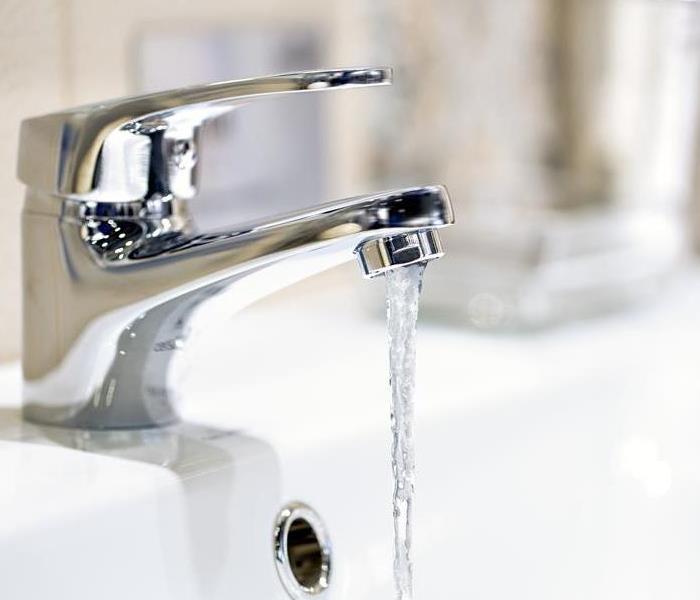 Water damage can leave you feeling hopeless, give SERVPRO a call today!
Water damage can leave you feeling hopeless, give SERVPRO a call today!
Water damage can be devastating to your belongings and home. When flood waters recede, you might find yourself with some musty furniture, a mildewed carpet, damaged books, or even worse: mold. But there's no need to panic—there are plenty of ways to restore your belongings after they've been exposed to water.
Dispose of items that are ruined
It is not an easy task to complete, but it is important to sort through all of your affected belongings and determine if the belongings are ruined or not. Once you have determined what items are ruined, it's time to dispose of them.
Disposing of items that have been damaged by water can be a challenge. To avoid mold growth or further damage, you need to keep the affected belongings isolated from other items until they are properly cleaned and dried. The best way to do this is by putting the ruined items in plastic bags--you can even seal them with tape if needed--and storing them in a dry place with good ventilation until they can be taken away for disposal.
Air-drying
If your items are wet after a loss, try air-drying your belongings indoors. Open windows to create a natural airflow or use fans to circulate the air throughout your home. You can also dry items in a garage or other dry areas if necessary.
Air drying is usually safe for most materials, but there are still some things you should avoid doing while they're drying:
- Don't expose wet clothing or bedding directly to heat sources like radiators or heaters until they're completely dry.
- Avoid hanging up wet clothes on hooks; instead lay them flat on a surface like carpeting so they don't stretch out of shape as they dry.
Gently clean
If your belongings have been affected by a water loss, there is no surprise that the items might be dirty. The first thing to do is to gently clean the affected items with a cloth or a soft brush. Don't use a pressure washer, steam cleaner, or harsh chemicals. This can cause more damage and make it harder for you to get your belongings back in good condition.
If you have books, albums, or photos that have been damaged, do not attempt to clean them with a soft brush or cloth, this could cause more damage. Instead, allow restoration professionals, such as SERVPRO of Lake Conroe, to clean and repair those items for you!
Call a restoration professional for help
If your belongings have minor water damage, it might be possible to clean the items on your own. If the damage is more severe, don't try to clean them yourself. The best way to restore those belongings is with the help of a professional restoration company. They can help you with drying out items, cleaning them, and disposing of those that cannot be saved. Water damage restoration companies use advanced technology to clean, sanitize, and restore your damaged belongings as much as possible so that it looks like new again!
There are things you can do to avoid further harm to your belongings.
If you have water damage in your home, there are things you can do to avoid further harm to your belongings. If possible, remove all wet items from the area and place them in a safe place. You may want to consider hiring professionals who specialize in drying out homes after a flood or storm has occurred.
If you don't have the time or tools for this process yourself, call a restoration company for content restoration services.
We hope that this guide has helped you understand the process of restoring your belongings after a water damage incident. Water damage can be devastating, but with the right knowledge and tools, you can make sure it doesn't ruin your life!


 24/7 Emergency Service
24/7 Emergency Service






